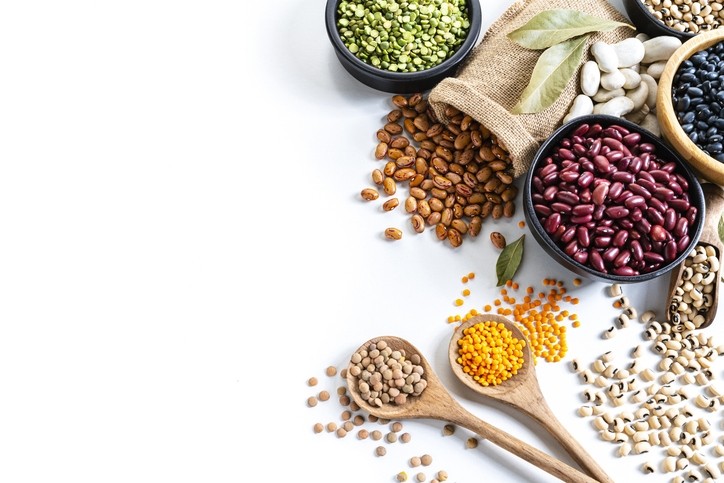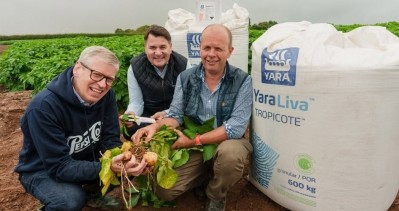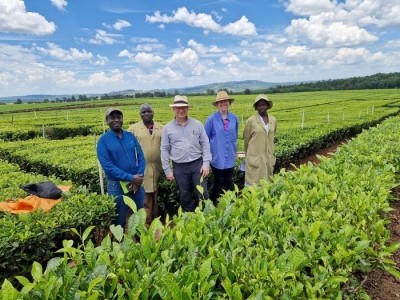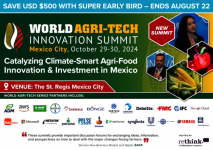Flipping a genetic ‘switch’ in beans, peas and lentils can boost soil fertility and food security

Beans, peas and other legumes are increasingly being recognised as a sustainable superfood for their high nutritional value and low environmental impact, as the world confronts the reality of our existing, unsustainable food systems.
High in protein, fibre and other important nutrients, these food crops already play a vital role in diets, food production and incomes for millions across the Global South, from Mexico to Rwanda to India.
Legumes also have the unique advantage of being able to source their own nutrients from the atmosphere by co-opting beneficial bacteria found in soil. As a result, legumes can grow without the addition of nitrogen-based synthetic fertiliser, leaving behind excess nitrogen after harvest to benefit the crops planted next.
But the ability to interact with soil bacteria, known as rhizobia, to break down – or “fix” – atmospheric nitrogen into usable nutrients is regulated by the plant to avoid expending energy unnecessarily. When nitrogen is otherwise available in the soil from fertilisers or other sources, legumes shut down this process of nitrogen fixation to preserve energy. However, this brake evolved in the wild relatives of legume crops and may not be fit for purpose for the high-yielding legumes we grow agriculturally.
In the search for ways to sustainably increase the productivity of nutritious foods with minimal inputs, scientists working with the Enabling Nutrient Symbioses in Agriculture (ENSA) project have identified a genetic regulator of nitrogen fixation in model legumes for the first time, creating the possibility of unlocking continuous nitrogen fixation.
The potential to flip the genetic “off switch” and ensure legumes convert nitrogen into nutrients regardless of the soil conditions could improve not only the yield of legume crops but also the amount of nitrogen left in the soil for subsequent crops, boosting their harvests as well. The benefits of this are threefold.
Firstly, unlocking constant nitrogen fixation would benefit the growth and development of legume crops, producing more beans, peas and lentils per area harvested to boost food supplies.
Nitrogen is an essential nutrient for plant growth, and is also the most abundant naturally occurring gas, providing an unlimited source of nutrients for legumes to convert through their interaction with rhizobia.
With the added nutrients from constant nitrogen fixation, legumes could potentially produce more or larger seeds. Because proteins have a high nitrogen content, protein content of seeds can also increase when more nitrogen is available. This would help address food and nutrition insecurity, particularly in regions where soil is degraded and access to fertiliser is limited.
The challenge of meeting the protein needs of a growing population would otherwise require substantial inputs. For example, recent research indicated a four-fold increase in nitrogen fertiliser would be needed to support a 52 per cent increase in wheat yield.
Secondly, by working towards legume varieties that constantly fix nitrogen, scientists can help reduce the need for synthetic fertilisers, both for legume and non-legume crops.
The roughly 110 million tonnes of synthetic nitrogen fertilisers used each year are a major contributor to agriculture’s climate footprint, representing 10.6 percent of agricultural emissions in 2018.
A high-performing legume can already fix up to 300kg of nitrogen per hectare, which would otherwise cost farmers around $1 per kg in fertiliser to meet the nutrient needs of the plant. Increasing this capacity would mean more nitrogen retained in legume roots and stored in soils after harvest to benefit other crops, including staple cereals. Legume residues left in the field after harvest also break down more easily due to the higher nitrogen to carbon ratio compared with cereal residues.
Finally, the combined potential benefit of greater yields and lower input costs would stand to boost the livelihoods of smallholder farmers, who are disproportionately impacted by the effects of climate change on soil health and food production, and the limited access to agricultural tools.
Research shows that increasing nodulation – the process by which legumes interact with soil bacteria to fix nitrogen – can increase yields in soybean, for instance. Higher yields ultimately mean greater income for farmers, all the while reducing costs of synthetic fertilisers, which are often expensive and inaccessible for many resource-poor farmers.
The ENSA team has made an important initial discovery by identifying this genetic switch in model legumes, which are predominantly used for research. But to start to understand the potential implications for agriculture, scientists need to translate this to the study of grain legumes, such as cowpea and soybean, and assess the impact of increased nitrogen fixation on grain yield.
This is an early but significant step towards improving an increasingly important crop for global food security and sustainable agriculture. The more we can understand about the intricacies of crop biology, the greater the chance we have of being able to optimise varieties to produce more food, more sustainably.
Dugald Reid is group leader at the La Trobe Institute for Sustainable Agriculture and Food (LISAF) in Melbourne, Australia and project leader within the Enabling Nutrient Symbioses in Agriculture (ENSA) project.
























